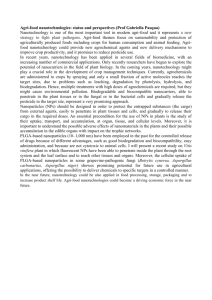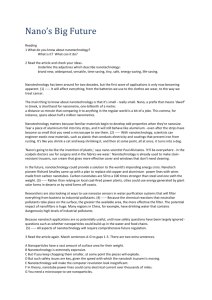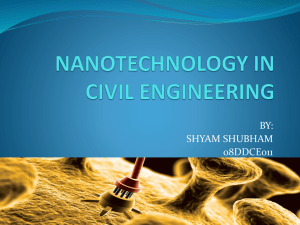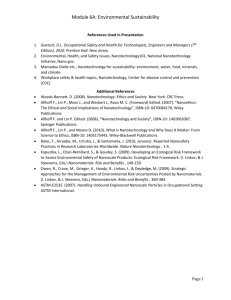Nanotechnology
advertisement
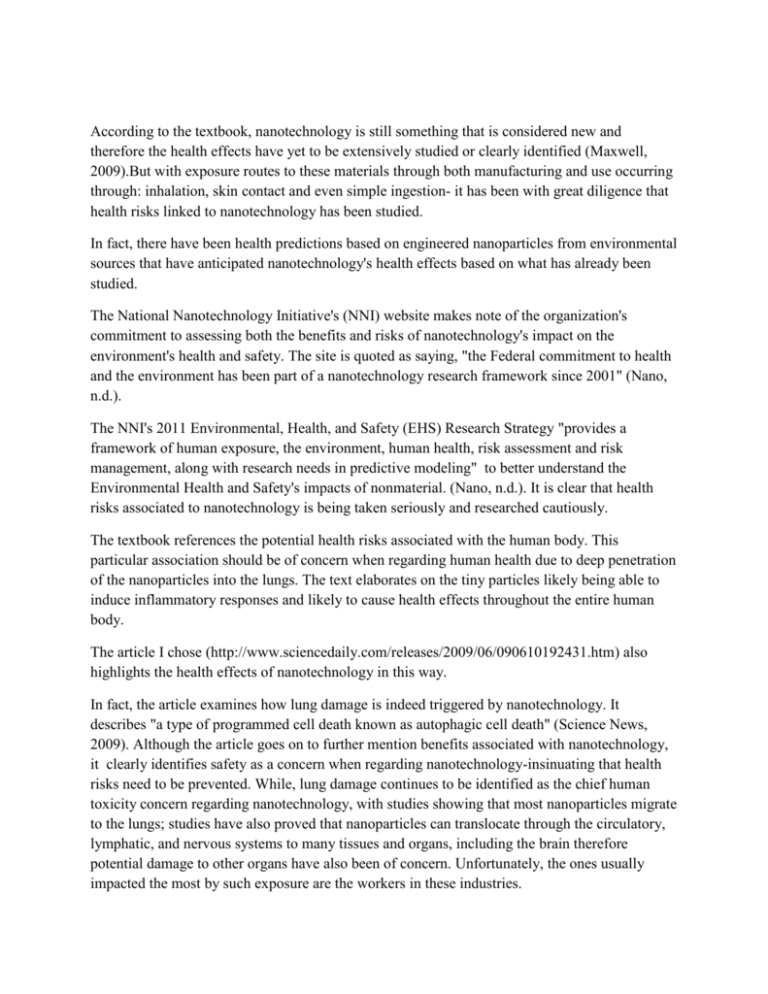
According to the textbook, nanotechnology is still something that is considered new and therefore the health effects have yet to be extensively studied or clearly identified (Maxwell, 2009).But with exposure routes to these materials through both manufacturing and use occurring through: inhalation, skin contact and even simple ingestion- it has been with great diligence that health risks linked to nanotechnology has been studied. In fact, there have been health predictions based on engineered nanoparticles from environmental sources that have anticipated nanotechnology's health effects based on what has already been studied. The National Nanotechnology Initiative's (NNI) website makes note of the organization's commitment to assessing both the benefits and risks of nanotechnology's impact on the environment's health and safety. The site is quoted as saying, "the Federal commitment to health and the environment has been part of a nanotechnology research framework since 2001" (Nano, n.d.). The NNI's 2011 Environmental, Health, and Safety (EHS) Research Strategy "provides a framework of human exposure, the environment, human health, risk assessment and risk management, along with research needs in predictive modeling" to better understand the Environmental Health and Safety's impacts of nonmaterial. (Nano, n.d.). It is clear that health risks associated to nanotechnology is being taken seriously and researched cautiously. The textbook references the potential health risks associated with the human body. This particular association should be of concern when regarding human health due to deep penetration of the nanoparticles into the lungs. The text elaborates on the tiny particles likely being able to induce inflammatory responses and likely to cause health effects throughout the entire human body. The article I chose (http://www.sciencedaily.com/releases/2009/06/090610192431.htm) also highlights the health effects of nanotechnology in this way. In fact, the article examines how lung damage is indeed triggered by nanotechnology. It describes "a type of programmed cell death known as autophagic cell death" (Science News, 2009). Although the article goes on to further mention benefits associated with nanotechnology, it clearly identifies safety as a concern when regarding nanotechnology-insinuating that health risks need to be prevented. While, lung damage continues to be identified as the chief human toxicity concern regarding nanotechnology, with studies showing that most nanoparticles migrate to the lungs; studies have also proved that nanoparticles can translocate through the circulatory, lymphatic, and nervous systems to many tissues and organs, including the brain therefore potential damage to other organs have also been of concern. Unfortunately, the ones usually impacted the most by such exposure are the workers in these industries. According to the Centers for Disease Control and Prevention's (CDC) website, "the earliest and most extensive exposure to hazards is most likely to occur in the workplace" with workers within nanotechnology-related industries being exposed to the toxicities of nanotechnology before anyone else and perhaps even in longer duration (CDC, 2012) Unfortunately, most workers exposed to nanoparticles are typically not informed that this is the case, so little is known about personal protection as an answer to toxic exposure. Although, the article I chose indicates both the benefits and risk of nanotechnology's use. I believe the author's argument of its health risks because various other sites have also been in support of the same theory of lung damage due to nanotechnology. With a variety of studies indicating the same health risks, it is not hard to agree with the author that this new technology is putting many in harm's way. References CDC. Centers for Disease Control and Prevention, (2012). Nanotechnology. Retrieved from website: http://www.cdc.gov/niosh/topics/nanotech/ Science Daily. (2009, June 11). Health risks of nanotechnology: How nanoparticles can cause lung damage, and how the damage can be blocked. Retrieved from http://www.sciencedaily.com/releases/2009/06/090610192431.htm

